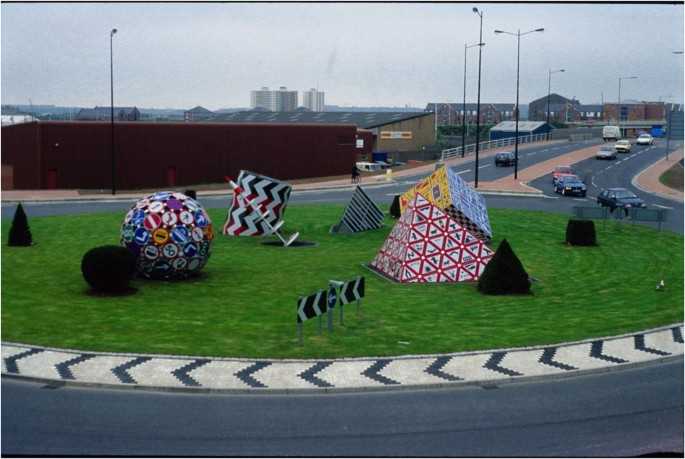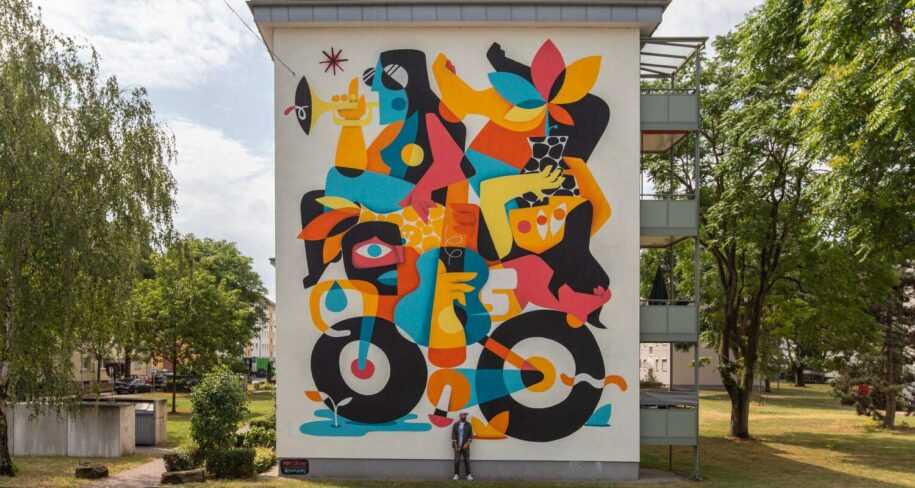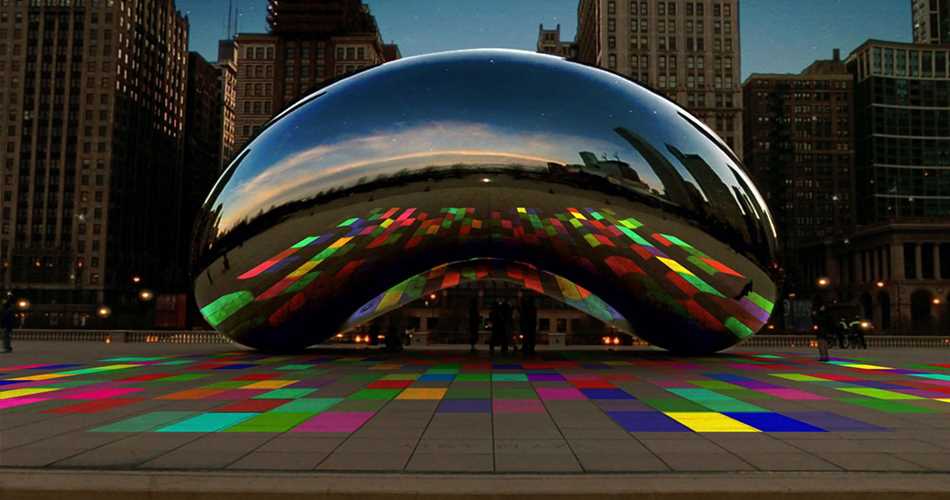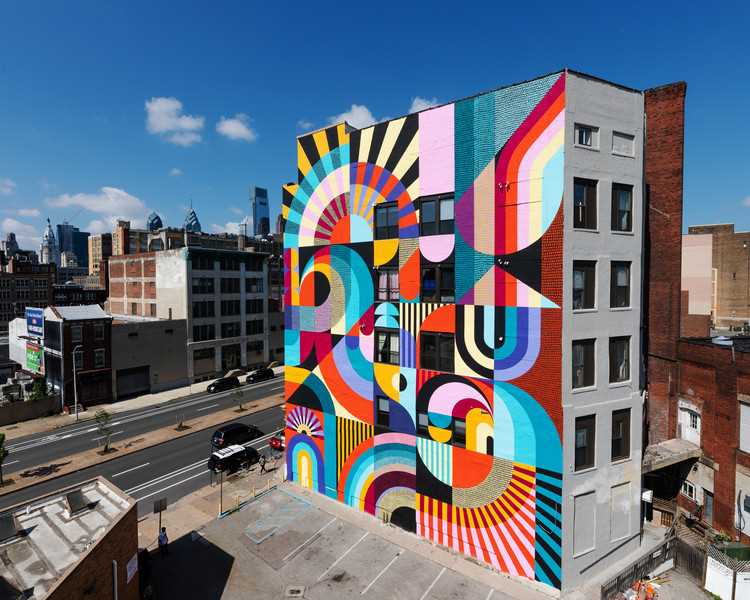
Art has long been a powerful form of expression, and in recent years, it has found a new stage in urban spaces. Cities around the world are embracing street art, sculptures, and installations as a way to enhance their visual appeal and engage with residents and visitors alike. From vibrant murals to thought-provoking installations, urban art is transforming public spaces into dynamic and interactive galleries.
One of the most exciting aspects of art in urban spaces is its accessibility. Unlike traditional museums and galleries, where there are often barriers to entry, urban art is out in the open for everyone to enjoy. It breaks down the elitism often associated with art and invites people from all walks of life to engage with and appreciate artistic expression.
Moreover, art in urban spaces has the power to foster a sense of community and belonging. It brings people together, encouraging them to explore their surroundings and connect with one another. It serves as a conversation starter, sparking discussions and debates about the meaning behind the artwork, the artist’s intentions, and its relevance to the local community.
Art in urban spaces also has the potential to transform neglected or underutilized areas into vibrant and lively destinations. It can revitalize neighborhoods, attract tourism, and boost local economies. By incorporating art into the urban landscape, cities can create a unique identity and enhance their overall aesthetic appeal.
The Evolution of Street Art in Bushwick
Bushwick, a neighborhood in Brooklyn, New York, has become renowned for its vibrant street art scene. Over the years, the art in Bushwick has evolved and transformed, reflecting the neighborhood’s changing dynamics and values.
The origins of street art in Bushwick can be traced back to the 1970s when graffiti first appeared on its walls. It started as a form of self-expression for marginalized communities and youth who sought to reclaim their public spaces. The graffiti was often political, conveying messages of social activism and resistance.
As the years went by, the street art in Bushwick started to shift. In the 1980s, the emergence of hip-hop culture heavily influenced the art scene, leading to the creation of vibrant murals and graffiti pieces that celebrated the culture’s music, dance, and fashion.
However, it wasn’t until the early 2000s that Bushwick’s street art scene truly exploded. The neighborhood experienced rapid gentrification, attracting a new wave of artists and creative individuals. As a result, the art in Bushwick took on a more diverse and eclectic form.
Today, the street art in Bushwick encompasses a wide range of styles and techniques. From large-scale murals that cover entire buildings to smaller, more intricate pieces tucked away in alleyways, the art adds a dynamic and colorful element to the neighborhood’s landscape.
What sets Bushwick apart from other street art hubs is its ever-changing nature. Walls that were once covered in art may be completely transformed a few weeks later, as new artists contribute their work. This constant evolution creates a sense of excitement and discovery for residents and visitors alike.
The street art in Bushwick not only serves as a visual spectacle but also reflects the neighborhood’s identity and history. It is a form of artistic expression that captures the essence of Bushwick’s past, present, and future, and continues to inspire and provoke thought among its viewers.
| Key Takeaways |
|---|
| – The street art in Bushwick originated in the 1970s as a form of self-expression for marginalized communities. |
| – The art scene in Bushwick was heavily influenced by hip-hop culture in the 1980s. |
| – The rapid gentrification of Bushwick in the early 2000s led to the growth of a diverse and eclectic street art scene. |
| – The street art in Bushwick is ever-changing, with new artworks constantly replacing old ones. |
| – The art in Bushwick reflects the neighborhood’s identity and history, capturing its past, present, and future. |
A Historical Perspective

Early Urban Art

Early examples of urban art can be traced back to ancient civilizations such as Ancient Egypt, Mesopotamia, and Greece. In these cultures, cities were not only centers of trade and commerce but also hotspots for artistic endeavors.
Ancient Egyptians adorned the walls of their cities with intricate hieroglyphics and decorative motifs, turning the urban landscape into a storytelling medium. Similarly, Mesopotamian cities featured impressive city walls adorned with intricate relief sculptures.
In ancient Greece, cities were adorned with monumental sculptures and murals, serving as a testament to the thriving artistic traditions of the time.
Medieval and Renaissance Urban Art

The medieval and Renaissance periods saw a continued emphasis on artistic expression in urban spaces. In medieval Europe, cities were adorned with elaborate stained glass windows, intricate carvings on buildings, and vibrant frescoes in churches.
The Renaissance brought about a renewed interest in art and architecture, leading to the creation of grand architectural masterpieces in cities such as Florence and Rome. This period saw the rise of public art, with sculptures and fountains depicting mythological figures and historical events.
During these times, urban art served not only as an aesthetic expression but also as a way to communicate religious, political, and cultural narratives to the masses.
Today, art in urban spaces continues to be a powerful means of transforming the urban landscape, engaging communities, and sparking conversations. From street murals to interactive installations, artists have found innovative ways to bring art into the public realm, making cities more vibrant and inclusive.
By understanding the historical significance of art in urban spaces, we can appreciate the diverse and multidimensional nature of this artistic form and its profound impact on society.
Exploring Bushwick’s Murals

Bushwick, a neighborhood in Brooklyn, New York, has become famous for its vibrant street art scene and numerous murals that adorn its buildings and walls. These murals not only add color to the urban landscape but also provide a platform for local artists to express their creativity and share their messages with the community.
Walking through the streets of Bushwick, you can’t help but be captivated by the sheer scale and diversity of the murals. From large-scale, highly detailed works that cover entire building facades to smaller pieces tucked away in hidden corners, there’s something for everyone to appreciate.
Many of the murals in Bushwick are influenced by a variety of artistic styles, from abstract and surrealistic to social and political commentary. The artists behind these murals use their work to address important issues such as gentrification, racial inequality, and environmental activism, among others. This makes exploring Bushwick’s murals not only visually appealing but also thought-provoking.
With so many amazing murals to discover, it’s no wonder that more and more people are flocking to Bushwick to immerse themselves in its artistic atmosphere. Whether you’re an art lover, a photographer, or simply curious about urban art, exploring Bushwick’s murals is an experience that should not be missed.
So put on some comfortable shoes, grab your camera, and prepare to be amazed as you embark on a journey through the streets of Bushwick, where every corner holds a new artistic gem waiting to be discovered.
A Tour of Colorful Expressions

Art in urban spaces brings life, vibrancy, and personality to cities around the world. One aspect that stands out is the use of color in these expressions. From murals on buildings to interactive installations, the use of color adds an element of joy and creativity to the urban landscape.
One city that has truly embraced colorful expressions is Barcelona, Spain. Its streets are filled with stunning and vibrant art that showcases the city’s rich cultural heritage. Walking through the narrow streets of the Gothic Quarter, you’ll come across colorful mosaics and intricate graffiti that tell stories of the city’s past and present.
In London, England, the urban art scene is equally as impressive. The city is home to world-renowned street artists like Banksy, whose iconic pieces can be found on walls, bridges, and even street signs. The use of bold and vivid colors in these artworks adds a sense of energy and excitement to the bustling city streets.
Another city known for its colorful expressions is Rio de Janeiro, Brazil. The city’s famous favelas are covered in vibrant street art that reflects the culture and spirit of its residents. These colorful murals not only beautify the city but also serve as a form of social commentary and expression.
When visiting these cities, taking a tour of the colorful expressions is a must-do activity. Local guides can point out hidden gems and provide insight into the meaning behind the artwork. Whether you’re an art enthusiast or simply someone who appreciates beauty, these tours offer a unique and immersive experience into the world of urban art.
Colorful expressions in urban spaces are a testament to the power of art to transform and uplift communities. Through the use of vibrant colors, artists are able to create visual experiences that evoke emotions and inspire creativity. So next time you find yourself in a new city, take the time to explore its colorful expressions and see firsthand how art can brighten up even the most mundane urban spaces.
The Cultural Significance of Bushwick Street Art

Bushwick, a neighborhood in Brooklyn, New York, has emerged as a hub for street art in recent years. The vibrant and ever-changing murals that adorn the walls of this neighborhood have transformed it into an outdoor gallery, attracting both locals and tourists alike. But beyond the surface beauty, Bushwick street art also holds a deep cultural significance.
One of the most notable aspects of Bushwick street art is its celebration of diversity and cultural identity. Artists from various backgrounds come together to express their heritage and tell their stories through their artwork. The murals reflect the vibrant and multicultural community that resides in Bushwick, serving as a visual representation of the neighborhood’s rich cultural tapestry.
Additionally, Bushwick street art plays a crucial role in revitalizing and reclaiming public spaces. Previously dilapidated walls and buildings have been transformed into canvases for artists, breathing new life into neglected areas. This not only beautifies the neighborhood but also fosters a sense of community pride and ownership over public spaces. Street art gives a voice to the people, allowing them to reclaim their neighborhoods and assert their presence in a rapidly changing urban landscape.
Furthermore, Bushwick street art serves as a platform for social and political commentary. Many artists use their work to address issues such as gentrification, inequality, and environmental activism. By creating thought-provoking and engaging pieces, they spark conversations and raise awareness of these important topics. Street art becomes a powerful tool for social change, challenging the status quo and amplifying marginalized voices.
The cultural significance of Bushwick street art extends beyond the local community. Through social media and online platforms, these murals reach a global audience, attracting art enthusiasts from all over the world. This exposure highlights the artistic talent and cultural vitality of Bushwick, putting it on the map as a must-visit destination for street art enthusiasts.
Fostering Community and Creativity

Art in urban spaces not only adds visual interest and beauty to a city, but it also plays a crucial role in fostering community and creativity.
By incorporating public art installations throughout a city, it creates a sense of belonging and pride among the community members. When people identify and connect with the artwork in their neighborhood, it helps to build a strong sense of community and ownership. These installations can become iconic symbols of the city, attracting tourists and generating a sense of local pride.
Moreover, public art inspires creativity and imagination in individuals of all ages. By exploring and interacting with art in public spaces, people are encouraged to think outside the box and embrace new ideas. This creative stimulation can extend beyond the realm of art and into other aspects of life, fostering innovation, problem-solving, and a more open-minded society.
In addition to this, art in urban spaces provides opportunities for local artists to showcase their talent and contribute to the cultural fabric of the city. Public art installations often serve as a platform for emerging artists to gain recognition and exposure to a wider audience. This not only supports the local arts community but also adds to the city’s vibrant and diverse cultural scene.
Engaging Communities

One of the primary benefits of art in urban spaces is its ability to engage communities. Public art installations can act as gathering points and catalysts for social interaction. They create opportunities for people to come together, meet, and engage in conversations about the artwork and their shared experiences. This sense of togetherness and collaboration helps to strengthen social bonds and build a sense of unity within the community.
In addition, public art can act as a visual storytelling medium, reflecting the history, culture, and values of a community. It can celebrate local heroes, commemorate significant events, or address social issues. By addressing these important narratives, public art installations create a platform for dialogue and discussion among community members, encouraging greater social awareness and understanding.
Benefiting the Urban Environment
Art in urban spaces also has tangible benefits for the urban environment itself. Public art installations can transform neglected or unattractive areas of a city into vibrant and inviting spaces. By adding color, texture, and visual interest, public art can revitalize urban areas and make them more pleasant for both residents and visitors.
In addition, some public art installations can also serve practical purposes. For example, sculptures or installations can be designed to provide seating or shade, making them not only aesthetically pleasing but also functional. This dual purpose of art helps to make cities more livable and sustainable.
| Key Benefits of Art in Urban Spaces |
|---|
| Building a sense of community and ownership |
| Inspiring creativity and imagination |
| Showcasing local artistic talent |
| Engaging communities and promoting social interaction |
| Reflecting the history, culture, and values of a community |
| Revitalizing urban areas and improving the urban environment |

I am a mural enthusiast and a fervent admirer of street art. Rather than creating murals myself, I am passionate about collecting them. My love for street art knows no bounds. I am dedicated to curating and cherishing these artworks that grace the streets. My collection stands as a testament to my profound appreciation for this form of artistic expression.
read about me



